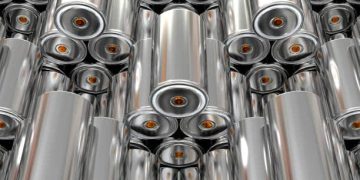The Australia-China relationship has stabilized following years of geopolitical and trade turbulence, paving the way for further cooperation, including joint initiatives in Asia. One notable opportunity lies in Southeast Asia’s transition to an electrified future.
Many Southeast Asian countries have committed to achieving net-zero carbon emissions, with electrification of end-user sectors, such as transport, being a key strategy. According to the International Renewable Energy Agency, Southeast Asia is expected to experience rapid electrification, with electricity accounting for over half of its energy consumption by 2050, up from 22% in 2018. This transition is anticipated to drive a significant increase in electric vehicle (EV) sales, reaching approximately 8.5 million units by 2035, as reported by EY-Parthenon.
The growing EV market in Southeast Asia presents opportunities for Chinese EV manufacturers, who are increasingly seeking growth abroad due to intense domestic competition. With Southeast Asia’s close economic ties to China and the challenging environment for Chinese companies in Western markets due to rising tariffs, interest in the region is expanding.
Chinese EV brands have gained considerable market share, growing from 38% in 2022 to over 70% in the past year. This expansion is supported by substantial Chinese investments in EV manufacturing and the upstream supply chain, including mining, mineral processing, and battery production. For example, Contemporary Amperex Technology (CATL), a leading Chinese battery maker, announced a nearly US$6 billion joint venture in Indonesia in 2022 to develop a comprehensive lithium-ion battery supply chain, covering mining, material processing, battery production, and recycling.
Other Chinese companies, such as CNGR Advanced Material, are involved in nickel and battery mineral production in Indonesia, while firms like NV Gotion, EVE Energy, and Senior Technology Material are making significant investments in battery manufacturing in Malaysia and Thailand. Additionally, there is increasing interest in key materials used in mobility batteries, such as aluminum and rare earth elements.
The influx of Chinese investment in battery manufacturing and upstream supply chains offers potential economic growth and job creation in Southeast Asia. However, it also brings environmental and social challenges, particularly related to mining activities. For instance, mining in Sulawesi, Indonesia, has raised concerns about environmental damage and disruptions to local communities, including the Bajau people.
Effective management of these challenges is crucial to ensure that the transition to an electrified future does not compromise environmental and social standards. Australia, with its expertise in waste management, mine site rehabilitation, and community engagement, can play a significant role in integrating responsible practices into the region’s mining and processing activities.
Chinese investments in Australia’s mining sector have generally faced fewer socio-environmental issues, likely due to the expertise of local management in implementing sustainable practices. A potential South-South-North cooperation model could facilitate the integration of these practices in Southeast Asia.
Such collaboration could benefit Australian companies and investors, given Australia’s reserves of key minerals like lithium and bauxite. By leveraging their collective strengths, Australia, China, and Southeast Asia could build a regional clean tech ecosystem with diverse and resilient supply chains.
Despite potential geopolitical tensions, historical precedents suggest that Australia, as a middle power, can effectively engage with major powers, mediate conflicts, and foster multipolarity. Successful trilateral cooperation in battery and mineral supply chains could serve as a model for global collaboration towards a sustainable future.
#ChinaAustraliaPartnership #ASEANEnergyTransition #ElectricVehicles #BatteryManufacturing #SupplyChainNews

















